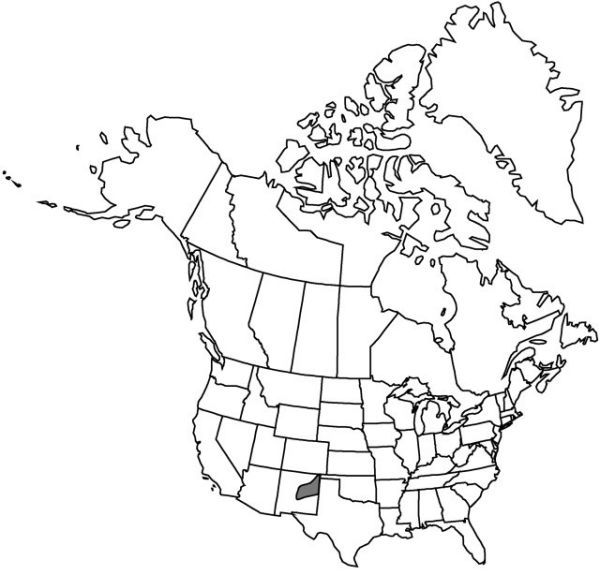Difference between revisions of "Yucca intermedia"
Yuccas Southw. U.S. 2: 116, plates 44–47. 1947.
FNA>Volume Importer |
FNA>Volume Importer |
(No difference)
| |
Revision as of 21:45, 16 December 2019
Plants cespitose, forming widely separated colonies, acaulescent or occasionally caulescent; rosettes 1–5 per colony, usually small. Stems erect, simple, shorter than 1 m. Leaf blade linear, plano-convex or plano-keeled, widest near middle, 33–65 × 0.5–0.8 cm, slightly flexible, margins entire, white to grayish. Inflorescences mostly green, racemose, sometimes paniculate proximally, occasionally paniculate and long-racemose distally, arising within rosettes, (5–)7–13 dm, glabrous; bracts erect; peduncle scapelike, 0.1–0.5 m, to 2.5 cm diam. Flowers pendent; perianth campanulate or rarely globose; tepals distinct, cream or greenish, often tinged rose or rosy brown, narrowly elliptic to broadly elliptic, 5.5–7 × 2–3.2 cm; filaments to 2.5 cm; anthers 3.2–4.8 mm; pistil 1.5–3.2 cm; style white or pale yellowish green, 7 mm; stigmas lobed. Fruits erect, capsular, dehiscent, oblong-cylindric, occasionally constricted at middle, 5–5.7 × 2–2.5 cm, dehiscence septicidal. Seeds glossy or dull black, thin, 6–10 mm.
Phenology: Flowering spring.
Habitat: Juniper-pinyon pine woodlands to adjacent grasslands
Elevation: 1100–2100 m
Discussion
J. M. Webber (1953) believed Yucca intermedia to be a hybrid between Y. glauca and Y. angustissima or Y. baileyi. S. D. McKelvey (1938–1947) recognized var. ramosa based primarily on paniculate inflorescences. Plants of this type are found in the southeastern area of the species range, where populations with only paniculate inflorescences occur, as well as populations with racemose and paniculate inflorescences.
Selected References
None.
